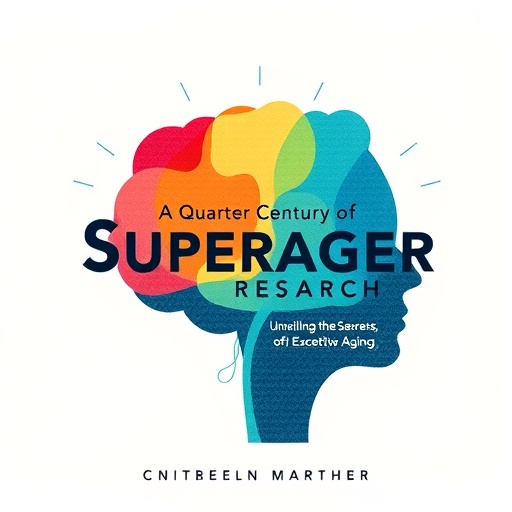For the past 25 years, researchers at Northwestern Medicine have dedicated their efforts to understanding an extraordinary group of elderly individuals known as “SuperAgers.” Unlike typical aging populations, these exceptional adults over the age of 80 demonstrate memory performance and cognitive capacities comparable to people several decades younger. Their remarkable mental acuity defies the conventional wisdom that cognitive deterioration is an unavoidable consequence of growing old, offering tantalizing insights into the neural underpinnings of preserved cognition.
SuperAgers not only maintain exceptional memory recall but also exhibit distinctive biological brain characteristics that differentiate them markedly from their typically aging peers. Dr. Sandra Weintraub, a professor of psychiatry, behavioral sciences, and neurology at Northwestern University Feinberg School of Medicine, describes this cohort as possessing “a distinct neurobiological profile” that enables superior memory performance well into advanced age. Understanding the nature and mechanisms of these neurobiological characteristics could pave the way toward interventions that preserve cognitive health for the broader aging population.
Central to this research is the identification of structural brain features that resist the hallmark degenerative changes commonly associated with Alzheimer’s disease and other forms of dementia. Unlike the persistent cortical thinning observed in normal aging brains, SuperAgers display preservation, and even thickening, of critical regions such as the anterior cingulate cortex. This region is integral to decision-making processes, emotional regulation, and motivational systems, suggesting that its preservation is crucial for maintaining cognitive function.
Cellularly, SuperAger brains exhibit remarkable traits, particularly the abundance of von Economo neurons and enlarged entorhinal neurons. Von Economo neurons are specialized cells implicated in rapid social processing and high-order cognitive functions, while the entorhinal cortex is a memory-critical hub. These neuroanatomical peculiarities hint at intricate cellular mechanisms granting SuperAgers their cognitive advantages, potentially linked to networks facilitating social engagement and memory consolidation.
Intriguingly, the research delineates two primary neurobiological pathways through which SuperAgers avoid cognitive decline. The first pathway, “resistance,” involves an apparent immunity to the deposition of amyloid beta plaques and tau tangles—protein aggregates heavily implicated in Alzheimer’s pathology. Some SuperAgers do not develop these pathological hallmarks at all. The second pathway, referred to as “resilience,” concerns individuals whose brains accumulate these plaques and tangles yet remain functionally unscathed, suggesting mechanisms of neuroprotection or enhanced repair processes.
These dual mechanisms challenge the simplistic correlation traditionally inferred between the presence of Alzheimer’s pathology and cognitive impairment. Resilient SuperAgers demonstrate that neuropathological burden alone may not determine cognitive destiny, opening exciting avenues for exploring cellular and molecular factors conferring resistance to, or compensation for, neurodegenerative insults.
Lifestyle and personality traits also distinguish SuperAgers from their peers. Despite diverse exercise routines and lifestyles, a common denominator emerges around social engagement. SuperAgers tend to be highly sociable, maintaining strong interpersonal relationships, which may stimulate brain networks critical for memory and cognition. This aligns with growing evidence implicating social connectedness as a protective factor against cognitive decline, potentially by fostering neuroplasticity and reducing stress-related neural damage.
The scientific methodology underpinning these findings is rigorous and longitudinal. The Mesulam Center for Cognitive Neurology and Alzheimer’s Disease at Northwestern has enrolled nearly 300 SuperAgers since 2000, with periodic neuropsychological assessments and brain imaging. Of these participants, 77 have generously donated their brains posthumously for detailed neuropathological examination. This brain donation has been instrumental in uncovering the neural substrates of SuperAging, providing unparalleled insights decades after the participants’ lifetimes.
The importance of brain donation in this context cannot be overstated. As Dr. Tamar Gefen, associate professor and neuropsychologist at Feinberg, notes, it offers a form of “scientific immortality,” allowing the continuation of discovery beyond death. Through this commitment, investigators can juxtapose clinical cognitive data with microscopic brain pathology, enhancing understanding of how structural and functional brain integrity correlates with cognitive trajectories.
This body of research culminated recently in a comprehensive review published as a perspective piece in Alzheimer’s & Dementia: The Journal of the Alzheimer’s Association. The article synthesizes a quarter-century of studies, highlighting key discoveries about the neurobiological and behavioral factors that define SuperAgers. Its release coincides with celebrations marking the 40th anniversary of the National Institute on Aging’s Alzheimer’s Disease Centers Program and the 25th anniversary of the National Alzheimer Coordinating Center, reflecting the significance and maturity of this research domain.
By peeling back the layers of normal and exceptional aging, the Northwestern SuperAging Program stands poised to revolutionize how scientists and clinicians approach dementia prevention. Identifying biological signatures of cognitive resilience may catalyze the development of therapeutics aimed not merely at treating pathology but at bolstering intrinsic brain robustness. This approach promises a paradigm shift, emphasizing preservation and enhancement rather than reactive treatment.
In summary, the SuperAger phenomenon offers a beacon of hope within aging research, underscoring that memory loss and cognitive decline are not predestined. Rather, they emerge within a complex interplay of neuropathology, cellular architecture, and socioemotional factors. Advanced research into these exceptional individuals reveals that brains can defy traditional aging patterns, potentially unlocking new horizons in combating Alzheimer’s disease and other dementias.
Subject of Research: Cognitive resilience and neurobiological mechanisms underlying exceptional memory performance in elderly SuperAgers
Article Title: THE FIRST 25 YEARS OF THE NORTHWESTERN SUPERAGING PROGRAM
News Publication Date: 7-Aug-2025
Web References:
- Mesulam Center for Cognitive Neurology and Alzheimer’s Disease
- SuperAger brains and Alzheimer’s
- Northwestern SuperAging research registry
Image Credits: Shane Collins, Northwestern University
Keywords: Aging populations, Older adults, Gerontology, Brain tissue, Human brain, Neurodegenerative diseases, Dementia, Alzheimer disease, Cognitive neuroscience, Neuroscience




